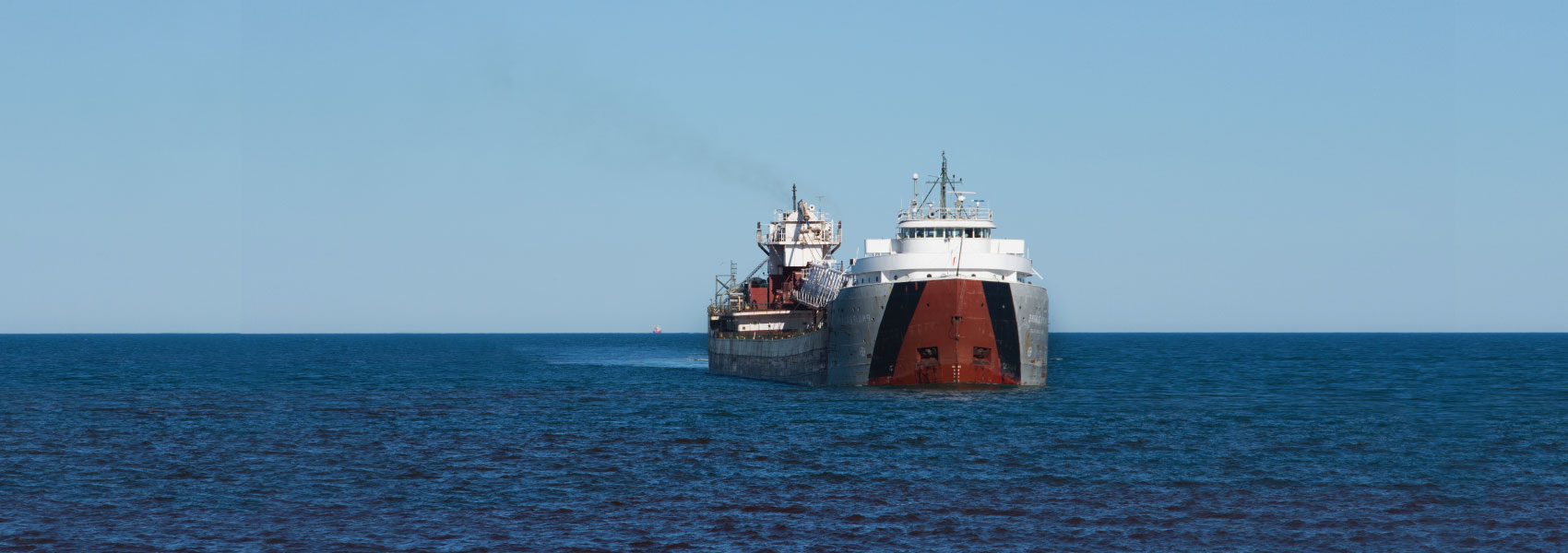Strategy for the Great Lakes-St. Lawrence River Maritime Transportation System
About the Strategy
The GLC is collaborating with the Conference of Great Lakes and St. Lawrence Governors and Premiers to support implementation of the Strategy for the Great Lakes-St. Lawrence River Maritime Transportation System, adopted in 2016, which aims to double maritime trade, improve the system’s environmental performance and support the region’s industrial core. The strategy recommends actions to maintain and expand the maritime transportation system and establishes a Regional Maritime Entity to coordinate state and provincial actions.
The GLC’s support for the regional maritime strategy is focused on establishing a maritime careers portal, maintaining the maritime asset inventory, managing data and information to track progress in implementing the strategy and aligning data collection and reporting with the Commission’s Blue Accounting initiative. More broadly, the Commission is collaborating with the Regional Maritime Entity and other stakeholders to advocate for key regional priorities, including allocating funds from the Harbor Maintenance Trust Fund; constructing a new large lock at the Soo Locks; dredging to maintain channels and harbors; investing in aging navigation infrastructure; ensuring adequate icebreaking capacity; managing dredged material; and improving the system’s environmental performance.

The Great Lakes and St. Lawrence River maritime transportation system is vital to the economies of the United States and Canada. The system facilitates domestic and international trade through the movement of goods and commodities, while creating jobs in port communities and supporting industries such as manufacturing, steel production, agribusiness and power generation. Ensuring the continued viability of commercial navigation requires maintaining and investing in harbors, ports, shipping channels, locks and related infrastructure throughout the Great Lakes-St. Lawrence River system, including regular dredging. These activities require close regional and binational coordination, given the interdependent nature of the system and the critical role played by key infrastructure like the Soo Locks and the St. Lawrence Seaway.
The governors’ and premiers’ strategy for the Great Lakes-St. Lawrence River maritime transportation system, released in 2016, aims to double maritime trade, improve environmental performance and support the region’s industrial core. The strategy was developed to focus the region on the policies, programs and projects needed to leverage and grow the regional maritime transportation system to boost maritime trade, create jobs and enhance the global competitiveness of the Great Lakes and St. Lawrence River regional economy.
The Great Lakes states and provinces are working with other levels of government, industry and other stakeholders to implement the strategy’s recommendations, which are organized around the themes of
- Increasing efficiency and reducing costs;
- Building new markets;
- Growing economic activity around the maritime transportation system; and
- Delivering results while managing for the future.
The governors and premiers have designated representatives to serve on a Regional Maritime Entity that is charged with coordinating state-provincial actions and spearheading system-wide improvements. With its dual mandate for both economic development and environmental protection, and its longstanding role as an advocate for Great Lakes-St. Lawrence River maritime transportation, the Great Lakes Commission is uniquely qualified to support implementation of the maritime strategy.
Project Partners
The Conference of Great Lakes and St. Lawrence Governors and Premiers
Funding
The GLC’s support for the regional maritime strategy is made possible by funding from the eight Great Lakes states.
.
Sign up for our e-newsletter
Get the latest Great Lakes Commission news and events in your inbox!
Sign up for our e-newsletter
Get the latest Great Lakes Commission news and events in your inbox!
